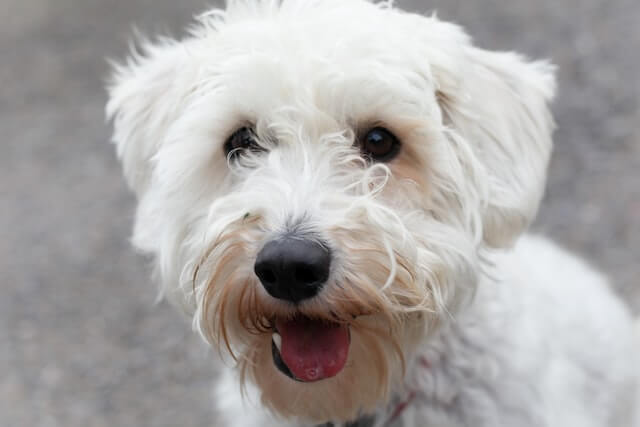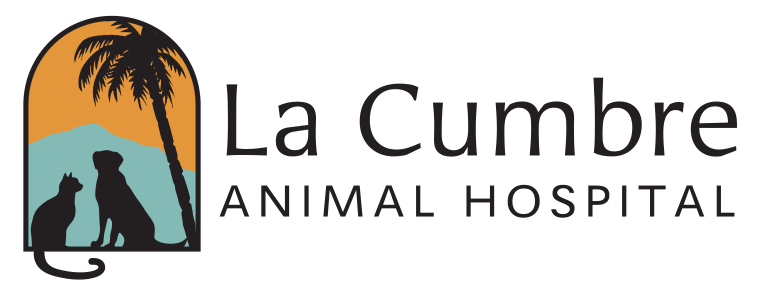You're probably a bit frustrated if your dog is prone to tear stains. They not only seem uncomfortable for your precious canine companion but they also look like a big mess. You might not need your pup to be "Best in Show" by any means, but you likely don't want to see them with a tear-stained face either! The truth is, this isn't just a cosmetic issue, since we have to treat the condition to eradicate it. Read on to learn more about the misinformation you can find about dog tear stains online, why they get it, and how to properly treat this condition!
Why Do Some Dogs Get Tear Stains?
Some dogs produce excessive tears, primarily because when humans turned wild dogs into Poodles, Bichons, Maltese, Boxers, Bulldogs, and more, selective breeding created short noses and protruding eyes that contribute to abnormally narrow and often crooked tear ducts. Excessive tears, then, is a problem we can't fix in most of these dogs (because we bred it into them in the first place), but we can manage the effects of too many tears.
Some veterinary/medical/other causes for excessive tearing include:
- Ingrown eyelashes
- Abnormally large tear-producing glands
- Abnormally small tear duct openings
- Stress
- Certain medications
- Poor-quality diet
- Ear infection
- Bacteria from plastic food bowls
- Foreign object in the eye
- Eye infection
- Teething (in young puppies)
Your veterinarian should rule out all of the above before proceeding with treatment. Now, assuming you and your veterinarian have ruled out medical causes of excessive tear production, what can we do for the resulting stains?
What Can Your Veterinarian Do to Help With Your Dog's Tear Stains?
To discuss treatment for tear stains in dogs, we first must dive deeper into the medical reasons these tear stains occur. Tear stains are usually caused by dye molecules called porphyrins. Porphyrins are iron-containing molecules produced when the body breaks down red blood cells. Porphyrins are excreted primarily through bile and the intestinal tract, but in dogs, a significant amount of porphyrin is excreted through tears, saliva, and urine.
When porphyrin-containing tears or saliva sits on white fur for any length of time, stains result. These iron-related stains intensify/darken in the presence of sunlight. All dogs produce porphyrin, but porphyrin staining is most noticeable in light-colored dogs. If you have ever noticed a white dog licking or chewing on their leg, the hair in that area will also turn iron-brown in color.
Now that we understand the underlying cause, we know that you can help prevent these tear stains on your dog by keeping the face meticulously free of porphyrin-containing tears. That means keeping the facial hair trimmed and wiping the face at least twice daily with a slightly damp washcloth to dilute and wash away the tears. You can also clean under the eyes with an ordinary contact lens cleaning solution (containing dilute boric acid, which oxidizes the iron in the porphyrins and lightens the color)—this will help keep things neat and tidy.
What About the Role of Yeast in Dog Tear Stains?
One of the pieces of misinformation floating around online about this condition is the role of red yeast or what's been referred to as "Ptyrosporin." Without going too far down the rabbit hole, this is actually a misspelled word! Over time, the organism that causes dandruff, which is called pityrosporum Malassezia (the correct spelling!), became generally accepted as what we now refer to as fungus.
Suppose your dog develops a yeast infection aside from their nose because the fur under the eyes is chronically wet with tears due to lack of upkeep. In that case, your dog has a medical condition that you can easily treat with proper grooming and upkeep.
Brown staining from yeast infection secondary to poor grooming maintenance and red staining from porphyrins are two different problems. This is why oral supplements aimed at reducing porphyrin production will not work in all dogs.

Why Do Some Dogs Produce More Tears Than Others?
The answer, of course, is not a yeast problem but rather a bacterial problem. Which bacteria contribute to excessive porphyrin production? We don't know for sure (how annoying!) There is some suspicion (though nobody has ever proved this) that Malassezia (aka Pityrosporium, aka NOT Ptyrosporin) is still involved somehow, even though we know very well the problem is primarily bacteria. Some believe the Malassezia, somehow, interacts with the bacteria in the tears of these dogs and that, somehow, Malassezia-fueled bacteria produce porphyrin. The mechanism of this bacterial porphyrin production is unclear.
What is clear, however, is that giving certain antibiotics eliminates excessive porphyrin production in some dogs, so a yeast infection is not the only possible cause of tear stains. Tylosin, the antibiotic in Angels' Eyes, is often effective in these bacterial cases. Since we know Tylosin is ineffective against Malassezia/ Pityrosporium/Ptyrosporin, that must mean that chronic low-grade bacterial infections cause tear stains in some dogs.
You might be asking, "Why isn't the FDA more concerned about the OTC use of an antibiotic? Shouldn't that be illegal?" It's clearly illegal for any company to make a product containing any other antibiotic, but somehow supplements containing Tylosin have managed to fly under the radar. Probably not forever, as every other country in the world has outlawed Angels Eyes and their ilk, and some have taken action to remove these products from store shelves.
As with any antibiotic, Tylosin is usually harmless in small doses but may be harmful to some dogs. At the very least, giving low-dose broad-spectrum antibiotics to any dog is likely to encourage bacterial resistance, a problem the human medical community has been hounding the veterinary community about for years (pardon the pun).
Are There Oral Medications That Reduce Porphyrin Production But Don't Contain Tylosin?
Of course there are! Naturally, now that we're getting into the realm of nutraceuticals, probiotics, and other poorly-studied supplements with little to no oversight or regulation, it's difficult for veterinarians to vouch for any of these products. If you still want to try one, that's your prerogative. But always remember that no medication is harmless. None. Not one. Every drug, supplement, and herb has some type of side effect. So buyer beware and always consult your veterinarian before starting your dog on any supplement, please!
What You Can Do At Home to Treat Tear Stains
As with most anything pet care-related, the more meticulous you are about cleaning your dog's face, the better the results will be.
The steps to preventing dog tear stains at home are:
- STEP 1: Meticulously maintain your dog's clean face. Wipe face with a damp cloth twice daily to remove excessive tears and keep up regular appointments with your groomer.
- STEP 2: Throw away your plastic food bowls. Use stainless steel, porcelain, or glass. Plastic food bowls often develop tiny cracks that harbor bacteria and cause facial irritation.
- STEP 3: Consider a mild boric acid-containing solution found in some contact lens cleaners, or use liquid vitamin C on a cotton ball, to wipe the dog's face and lighten the tear stains that have already formed. Acids like boric and citric (Vit C) presumably oxidize the porphyrin iron compounds and lighten them, whereas sunlight makes the stains darker.
- STEP 4: If porphyria remains despite your best grooming efforts, consider a non-Tylosin-containing oral supplement.
- STEP 5: If your tap water happens to be high in mineral content or iron, consider giving the dog bottled water or use a filter to create cleaner water.
- If you insist on using antibiotics under veterinary supervision, drugs like doxycycline, metronidazole, and enrofloxacin have all been used with some success. An exam is required for your vet to determine what is the best course of action for your pup.
Veterinarians always recommend feeding your dog the highest quality, balanced diet you can afford, which can also help prevent tear stains. Some folks swear by homemade or raw diets, while others are concerned about nutrient balance issues with homemade diets, and most veterinarians prefer you feed a well-studied commercial diet of some kind from a major manufacturer with a nutritionist on staff. Also note: the myth that's been circulating that grain diets are linked to increased tear production is false. The best thing to do regarding a healthy diet for your canine companion is to seek advice from your veterinarian.
Some online recommendations that veterinarians do NOT recommend for treating dog tear stains are:
- OTC Tylosin
- Terramycin (oft misspelled Teramyacin)
- Makeup remover
- Milk of magnesia, yogurt, or honey
- Hydrogen peroxide
- Gold bond
- Corn starch
Putting any of these things in or around the eye will likely make your dog miserable! Hopefully, your main takeaway has been that proper grooming and maintenance of your dog's face (keeping hair out of the eyes) is the primary treatment for tear stains. Also, please make an appointment with your veterinarian to rule out the medical causes of excessive tears before starting your dog on any supplements!
The American Kennel Club (AKC) is another excellent resource for preventing and treating tear stains in dogs. Have a dog with stubborn tear stains? Call us today!
